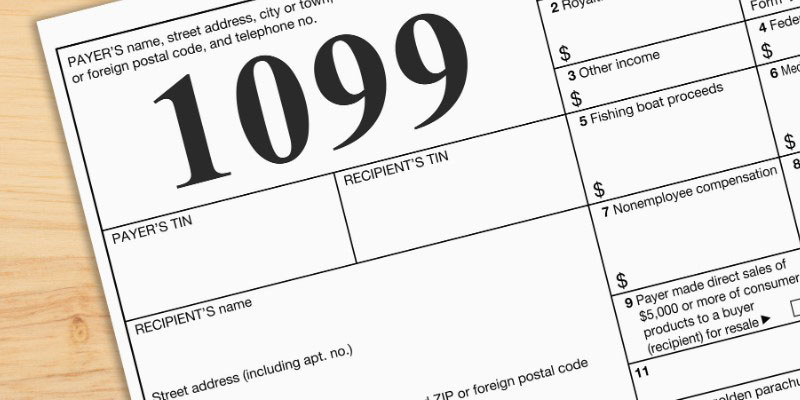Form 1040-A for U.S. Individual Tax Filers and Long-Term Implications
Dec 25, 2023 By Triston Martin
The IRS developed a simplified version of Form 1040 that served as an alternative for most American taxpayers when filing their yearly returns. It worked best for people with simple incomes – no proprietorships or special deductions and under a hundred thousand dollars per year. Nicknamed the "short form," it was phased out after 2017, giving way to the revamped Form 1040 introduced in 2018.
Choosing Between Form 1040 and Form 1040-A
It is a US taxpayer’s normal form in filing, known as IRS Form 1040A. It is made with the idea of catering to high-profile tax customers like those who have extensive investments, itemized deductions, or several tax credits. Nevertheless, Form 1040-A served as an easier option for those with less complicated tax affairs before it was ended.
Form 1040A, a more concise version of the traditional Form 1040, was structured as a two-page document. It facilitated reporting standard income types, along with specific deductions and credits. Regardless of marital or household status—whether single, married (filing jointly or separately), heading a household, or widowed—Form 1040-A was a viable option for tax filing, provided certain criteria were met.
Qualifications for Using Form 1040-A
To be eligible for filing taxes with Form 1040-A, a taxpayer's annual taxable income must be below $100,000. Additionally, it was essential that the taxpayer had not engaged in transactions involving incentive stock options (ISOs) within that tax year. The form accommodated various income sources like wages, salaries, tips, capital gains, dividends, interest income, unemployment benefits, pensions, annuities, specific types of Social Security, retirement benefits, scholarships, grants, and dividends from the Alaska Permanent Fund. However, income deriving from business activities required the more elaborate Form 1040 for reporting.
Functionality of Form 1040-A in Tax Deductions
For many, form 1040-A played a significant role in simplifying the tax filing process. It allowed taxpayers to claim limited deductions to lower their taxable income. These specific deductions included student loan interest, tuition and fees for higher education, classroom-related expenses, and contributions to individual retirement accounts (IRAs). A key restriction of Form 1040-A was its ineligibility for itemized deductions. This meant that if a taxpayer had potential deductions like charitable donations or mortgage interest that exceeded the standard deduction amount, using Form 1040A might not have been the most beneficial choice.
Tax Credits via Form 1040-A
In addition to deductions, Form 1040-A was instrumental in claiming various tax credits, effectively reducing the total tax liability. Tax credits applicable with this form included the American Opportunity Tax Credit (AOTC), Earned Income Credit (EITC), credits for child and dependent care, and credits for the elderly, disabled, and those contributing to retirement savings.
Comparison with Form 1040-EZ
Form 1040-EZ, another variant, offered a simpler filing process than Form 1040-A but had limitations. It was suitable only for single taxpayers or those married and filing jointly, without the option to claim any deductions except the EIC. Unlike the more versatile Form 1040-A, 1040-EZ was restrictive regarding filing status and tax benefits. When taxpayers’ financial situations involved dependents, educational expenses, or specific deductions, transitioning from 1040-EZ to 1040-A was often necessary.
Transition to the Redesigned Form 1040
With the new, more user-friendly Form 1040 in 2018, the IRS phased out both Form 1040-A and 1040-EZ. This redesigned form aimed to further streamline the tax filing process, accommodating a broader range of taxpayers’ needs more efficiently. The transition marked a significant shift in the IRS's approach to simplifying individual tax filing, reflecting the evolving financial landscapes and the need for more adaptable tax forms.
New Tax Filing Landscape
The discontinuation of Form 1040-A marked a notable shift in the tax filing process for many Americans. This change required taxpayers who previously relied on the simplicity of Form 1040-A to adapt to the newer, unified Form 1040. The IRS's decision to consolidate the tax forms was part of a broader initiative to streamline tax filing, but it also brought new challenges and learning curves for certain taxpayers.
Strategic Tax Planning for Diverse Financial Scenarios

With the elimination of Form 1040-A, individuals who had straightforward financial situations but did not fit the even more basic criteria of Form 1040-EZ found themselves navigating the comprehensive Form 1040. This change meant taxpayers had to become more knowledgeable about tax credits and deductions previously not applicable. For some, this transition offered an opportunity to explore potentially advantageous tax strategies not available with Form 1040-A, such as more diverse itemized deductions.
Educational and Supportive Resources for Taxpayers
In response to the elimination of Form 1040-A, the IRS and various tax preparation services increased their efforts to provide educational resources and tools to assist taxpayers in understanding the new form. This included detailed guides, simplified instructions, and enhanced digital tools to smooth the transition. Tax professionals also saw an increased demand for their services as taxpayers sought expert advice to navigate the complexities of the new form, especially in the first few years following the change.
Long-Term Implications for Tax Administration
Consolidating tax forms into a single, more comprehensive Form 1040 also affected the IRS's tax administration processes. By reducing the number of forms, the IRS aimed to improve efficiency in processing returns and addressing taxpayer queries. However, this also meant that the IRS had to restructure its support and processing systems to accommodate the diverse needs previously catered to by separate forms.
The discontinuation of Form 1040-A represented a significant shift in the tax filing paradigm, reflecting an evolving tax administration system that seeks to balance simplicity with the need to address a wide range of taxpayer circumstances. While this transition presented initial challenges, it also opened avenues for taxpayers to benefit from a broader array of deductions and credits, thereby optimizing their tax outcomes in the long term.





